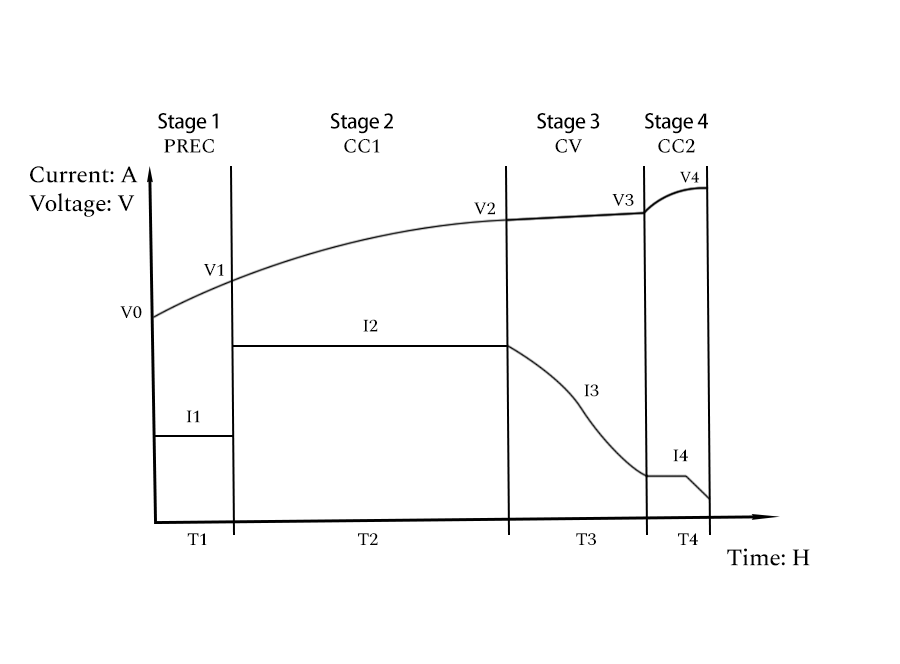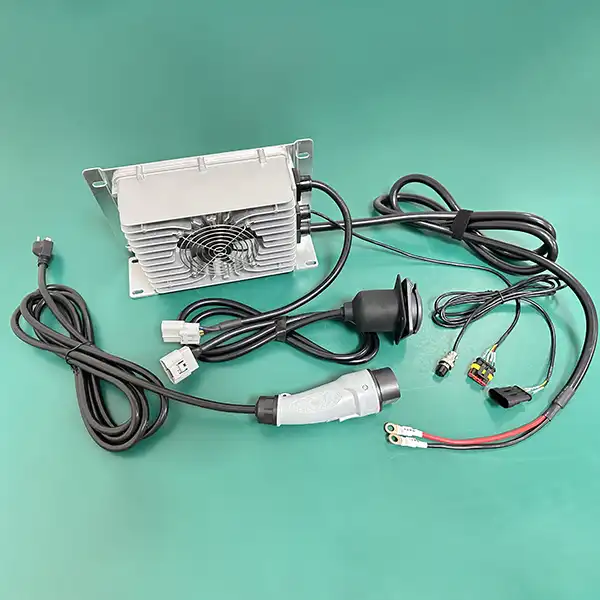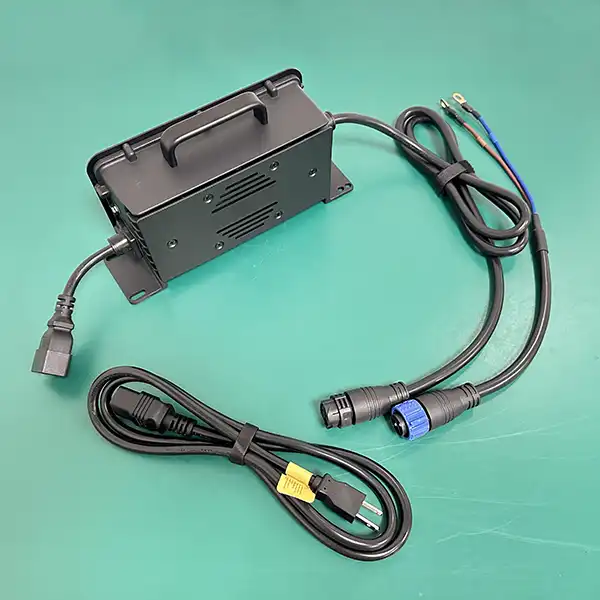
All our products utilize intelligent software control. The charging process can be controlled via communication protocols such as CAN and 485, or through the built-in charging curve of the charger, which allows the adjustment of parameters such as voltage, current, and charging duration at different stages. These settings can be tailored according to the battery type, capacity, and customer requirements.
Below is a brief description of the charging logic for each stage:
(Pre-Charge):
- When the battery voltage is below V0, the charger locks with no output to ensure battery safety.
- When the battery voltage is between V0 and V1, a trickle current of I1 is used for restorative charging. If the voltage does not rise to the predetermined value within the set time T1, the charger can lock with no output to protect the battery.
- When the battery voltage is between V1 and V2, it enters Stage 2, constant current charging.
Stage 2 (Constant Current Charging):
- The battery is charged with a set current I2. Typically, I2 is 0.15
0.18C for flooded lead-acid batteries, 0.120.15C for maintenance-free lead-acid batteries, and 0.2~0.5C for lithium batteries. - When the battery voltage reaches V2, it switches to constant voltage charging.
- The charging duration T2 can be set; when the constant current charging time reaches T2, it automatically transitions to Stage 3.
Stage 3 (Constant Voltage Charging):
- When the battery voltage rises to V2, constant current charging ends and constant voltage charging begins. The charging current gradually decreases, and when it reduces to I3, constant voltage charging terminates.
- At this point, it can be considered fully charged, or it can continue to Stage 4 for further charging.
- The charging duration T3 can be set; when the constant voltage charging time reaches T3, it automatically transitions to Stage 4 or indicates a full charge.
Stage 4 (Float Charging):
- Continues with a small constant current I4 until the battery voltage reaches V4 or the battery management system stops charging, indicating a full charge.
- The charging duration T4 can be set; when the float charging time reaches T4, it automatically transitions to Stage 4 or indicates a full charge.
Optional Features:
- The charger can maintain output after startup, which can be used for activating charging after lithium battery over-discharge protection or for constant power supply.
- Temperature control can be added to the charger, such as no charging below zero degrees or above 60 degrees Celsius.
- After the battery is fully charged, the charger can restart the charging program to replenish the battery if it detects the battery voltage falling below a certain set value.




